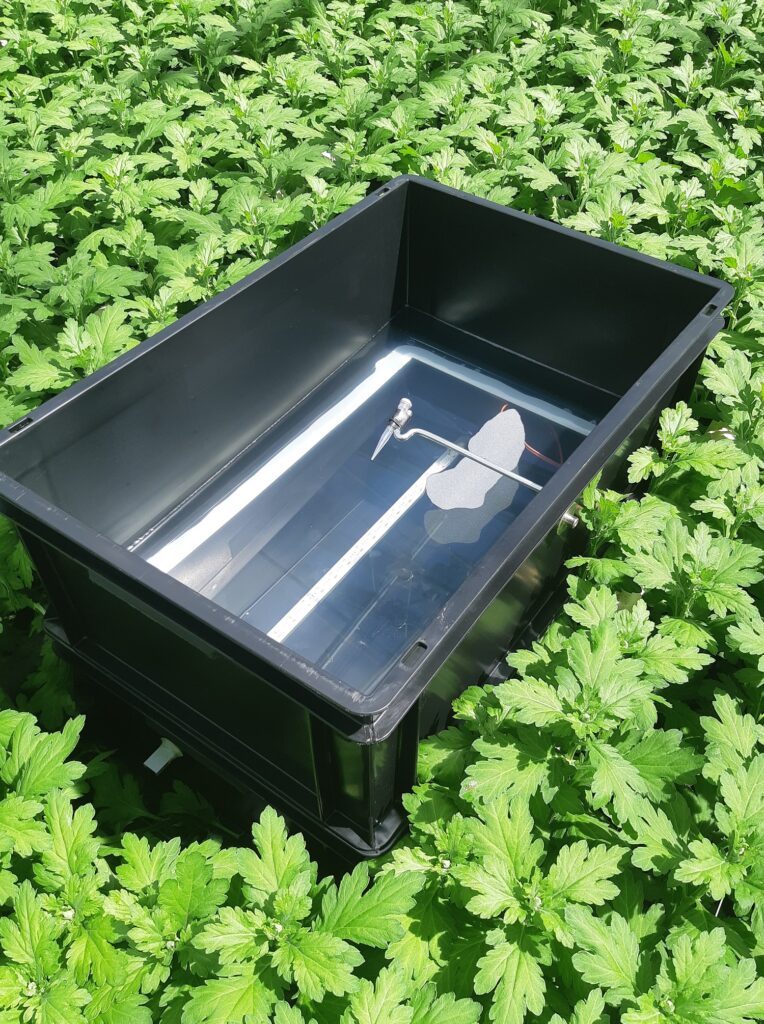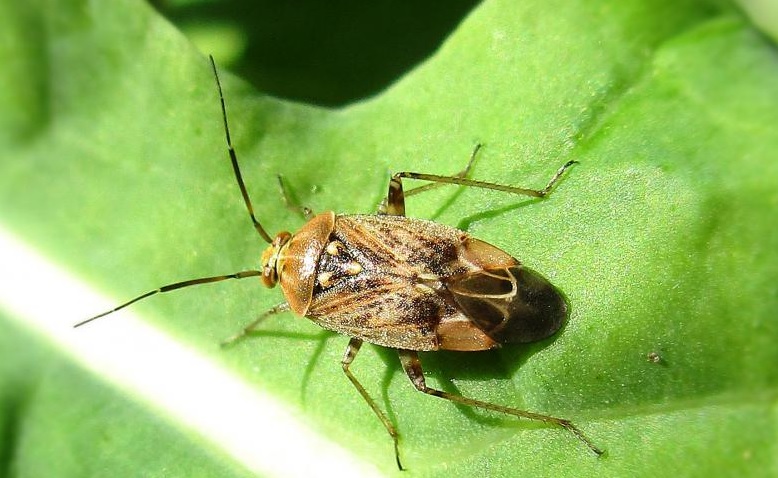European tarnished plant bugs (Lygus rugulipennis Poppius) are the scourge of eggplant, cucumber and chrysanthemum breeders. The bugs damage the buds of the flowers or fruit, causing the fruit to be repelled or seriously damaged. Restrictions in the use of pesticides make catching the bugs the only option. This is done with the help of pheromones. But with very limited success.
Drown
Pheromones (sexual attractants) only catch a fraction of the bugs and only the males. With the help of a light waterfall, entomologist Rob van Tol catches 20 to 30 as many. And both male and female bugs. The trap consists of a tub with a transparent bottom, illuminated from below by white LED light. The bugs are attracted to the light, enter the tub and drown.
In the greenhouse, a combination of all colours, which is what white light is, is superior
Rob van Tol, Biointeractions and Plant Health
The use of light to attract insects to water is not new. However, Van Tol explains that hitherto the water was illuminated from above. ‘This causes reflections and polarisation of the light, which actually repels insects.’ To circumvent this issue, Van Tol mounted the lamp under the water, which provides the added benefit of keeping it safe from the greenhouse sprinklers.

Tests (conducted in collaboration with LTO Greenhouse horticulture and Koppert) in chrysanthemum breeders’ greenhouses prove the trap works. And, surprisingly, it works best with ordinary white LED light. ‘Surprising and frustrating’, says Van Tol. Frustrating because he has no idea why. Wind tunnel tests in the lab show that the bugs have a marked preference for UV-A light (340-400 nm) over other colours.
Odd
‘In the greenhouse, a combination of all colours, which is what white light is, is superior’, Van Tol explains. ‘In the wind tunnel, a single colour, UV-A, works best. That is odd. Why this is, is something we have yet to discover. The strength of the light may be relevant. In the wind tunnel, the bugs are released close to the light, while the distance in the greenhouse may be many metres.’
Can we catch large numbers of bugs, and if so, how many traps do we need per square metre?
Rob van Tol, Biointeractions and Plant Health
It has no effect on the results: the light trap works. In follow-up studies, Van Tol aims to optimise the setup. ‘How many bugs can we catch compared to the numbers flying into the greenhouse? Can we catch large numbers of bugs, and if so, how many traps do we need per square metre? And, not irrelevant, do the results outweigh the investment?’
Automatic detection
European tarnished plant bugs must be caught when they migrate, which occurs twice a year in the spring and fall for about five weeks. It is then that they enter the greenhouse through opened windows. Timely detection is of the essence. Van Tol: ‘I am currently involved in a starting project in which we monitor plague insects using automatic detection. The light-waterfall for European tarnished plant bugs is one of the possible test cases.’

 European tarnished plant bug. Photo: Wikimedia commons
European tarnished plant bug. Photo: Wikimedia commons